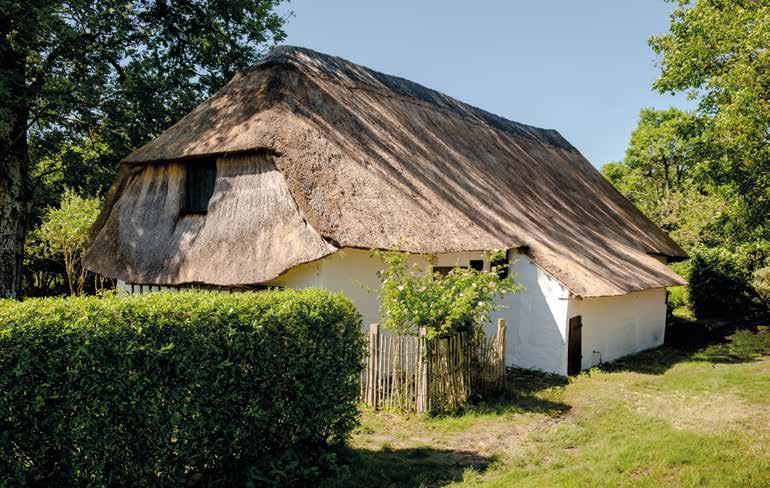Stine’s House – Rare Regional Architectural Style in Southern Denmark Stine’s House is a listed 18th-century smallholding built in a special regional architectural style. It features a unique type of thatching, which was once quite common on the island of Lolland in southern Denmark, but which today has just about disappeared. As a smallholding, the house also represents a type of house, which was once widespread throughout Denmark, but of which there are very few left today: a poor man’s home for the rural working class. Stine’s Hus, named after one of its past residents, was well preserved and in good condition when Realdania By & Byg acquired it in 2019, so only gentle restoration was called for. The house is rented out for residential purposes and is one of Realdania By & Byg’s collection of more than 50 houses representing 500 years of Danish building culture, all of which play a role in keeping building culture alive. A traditional smallholding on Lolland What makes Stine’s House so characteristic of the region of Lolland is the fact that the top section of its end wall is also thatched. This feature is still intact. This tradition is seen nowhere else in Denmark and is now only to be found in very few places on Lolland. The top section of the end wall is rounded off with what is called a skyne – a kind of eave, where 66
the cladding of the end wall protrudes over a wooden frame. Beneath it, the smallholder could hang his tools, thereby protecting them from the elements. The roof of the house is finished with a so-called Holstein or Lolland ridge, while the entire structure of the house, both the half-timbering and the masonry infill, is limewashed – another traditional Lolland feature. The house is also one of the oldest preserved smallholdings in Denmark. It was built on land belonging to the nearby Pederstrup Estate, where the smallholders carried out various farming tasks. At that time, the smallholding was allocated four ‘barrels’ (an old Scandinavian unit of area) of land, so the serf could supplement his family’s household income with a little farming and animal husbandry. In the 18th and 19th centuries, there were thousands of such smallholdings throughout Denmark. Today, many have been demolished or rebuilt. Realdania By & Byg’s restoration The previous owners had taken good care of Stine’s Hus when Realdania By & Byg acquired it. Consequently, the restoration was mainly about upgrading its comfort factor, safeguarding the structure of the house and adding an 18th-century touch.







